Espionage novels and movies are filled with rifles that are transported in a brief case, quickly assembled, then used to fire incredibly accurate shots. But is the ability to transport a disassembled AR in a small case or knapsack more intriguing than practical? Couldn’t an AR already be considered a takedown rifle? Can’t you just disassemble the lower receiver from the upper receiver and tote the two pieces in a duffle bag? These were a few questions team members had as we started looking into takedown AR-15s.
On one side of the debate, a takedown AR can be discreetly carried without the normal gun case that announces to all what is inside. A takedown AR is something one might consider adding to his bug-out gear should flood, fire, or worse coming knocking on the door. Takedown ARs also have the ability to swap calibers, allowing a user to perhaps opt for 300 AAC Blackout on a pig hunt, use the 5.56mm NATO for home defense, and 9mm for low-cost training. This caliber-swap feature gives these ARs the ability to use whatever ammo is available at the moment. We’ve all experienced the ammunition shortages of the recent past, and there is no reason to think it won’t happen again. These ARs can feed whatever ammo is available. Another plus on the takedown AR side is easier cleaning.
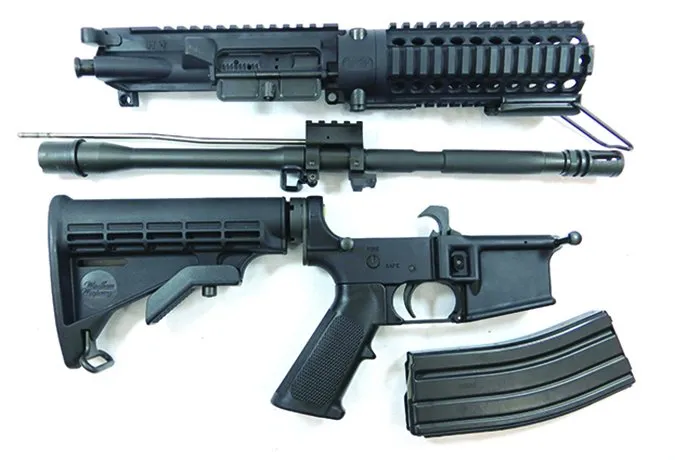
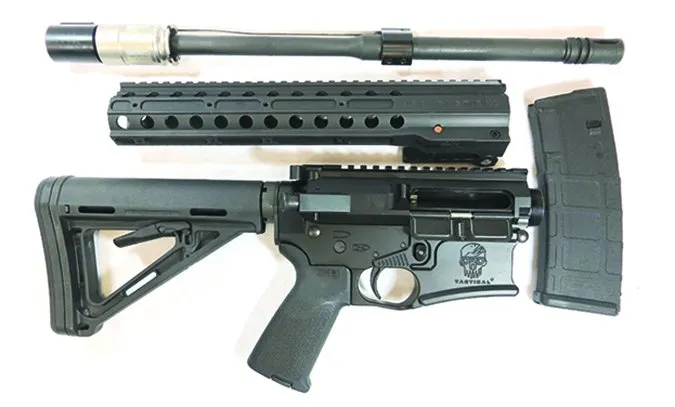
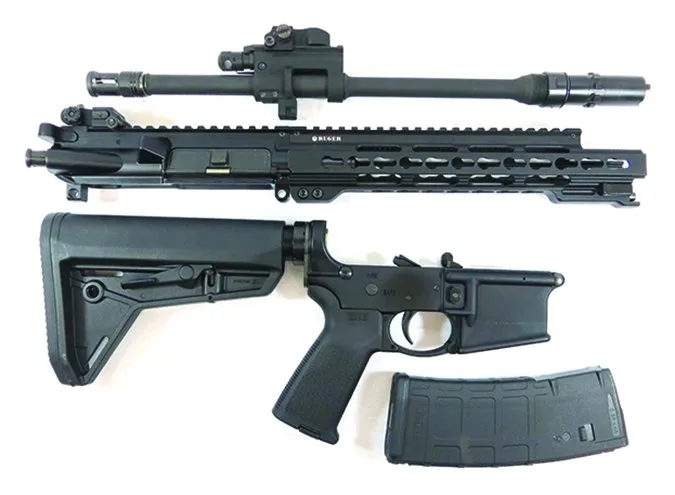
On the other side of the debate, parts that are assembled and reassembled wear faster than parts that are fixed, and the more complicated a design, the more likely it is to break and the harder it is to get spare parts. Also, we wondered how zero might shift when removing then replacing the same-caliber barrel? And, how would a different caliber affect point of impact? Of course, price is always a consideration, and the cost of these takedown ARs is high — more than four times the cost of an entry-level 5.56mm AR priced at about $550. Can’t a shooter just buy two rifles and set them up with optics at the same cost or less?
To answer these and other questions, we gathered three models from DRD Tactical, Ruger, and Windham Weaponry. These manufacturers have taken the modularity characteristics of the AR to a new level, each offering its own unique takedown design. Operationally, the DRD and Windham are direct-gas-impingement models; the Ruger uses a piston system.
All in, these takedown rifles get smaller by separating the barrel from the rail, which we estimate as a reduction in length of about 8.5 inches. With all three takedown ARs, the rifle is broken down into three main components. One thing to note: The rails or handguards on these rifles are not compatible with aftermarket parts. You must use the handguard the AR is shipped with because it is a key part of the takedown design. You can, however, customize these ARs with other aftermarket parts like stocks, pistol grips, triggers, sights, controls, muzzle devices, and so on.
Getting Started
We had no issues assembling and disassembling any rifle, and we did not baby them. Some takedown methods were faster and simpler than others. If assembly time is a factor for our readers, the DRD at 10 seconds and the Ruger at slightly more time would win hands down, but we do not think a barrel swap would be made in a high-stress situation. Still, it was comforting to know that we could tear them down and build them back in less time than it takes to load a 30-round AR-15 magazine by hand. We felt the piston-powered Ruger had a slight advantage since the gas tubes, which are part of the DRD and Windham gas systems (except with the Windham 9mm barrel), are fragile. More care is needed when storing spare barrels and assembling barrels to receivers. We became quite adept at the takedown procedures and favored the simplicity of the Ruger. We also liked the DRD’s takedown system because it allowed the user to tighten the barrel nut with a wrench, if one desired. The Ruger and Windham did not allow this. The Windham takedown procedure was more complicated, and the rail and sling swivel needed to be managed when swapping calibers, as we will get into.
We found differences in point of impact (POI) when changing calibers, which we expected due to different bullet weights and muzzle velocities. If we owned these rifles, we would zero the rifle with one caliber then tape a cheat sheet to the scope, so when the barrels are swapped from, say, 5.56 to 300 Blackout, the optic is adjusted accordingly. Another approach is to have an optic with a quick-release mount zeroed for each caliber and re-mount the optic in the same place when using that caliber. This fix is expensive, can lead to mixing up optics with barrels and bolt carrier groups (in the case of Windham), and involves loosening and tightening parts, which can promote wear.
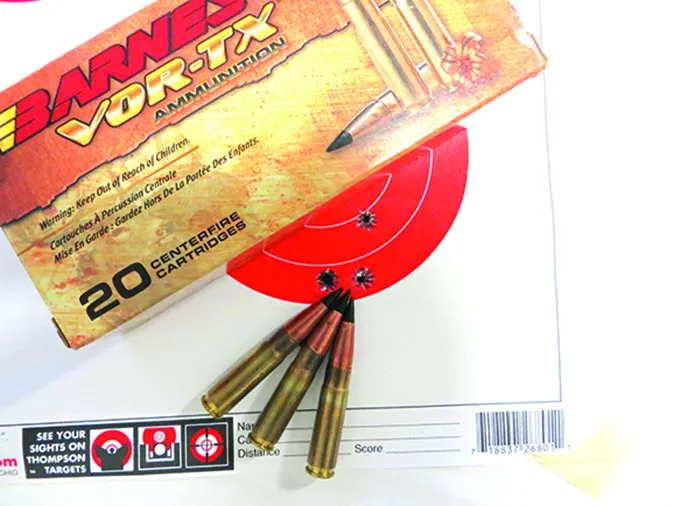

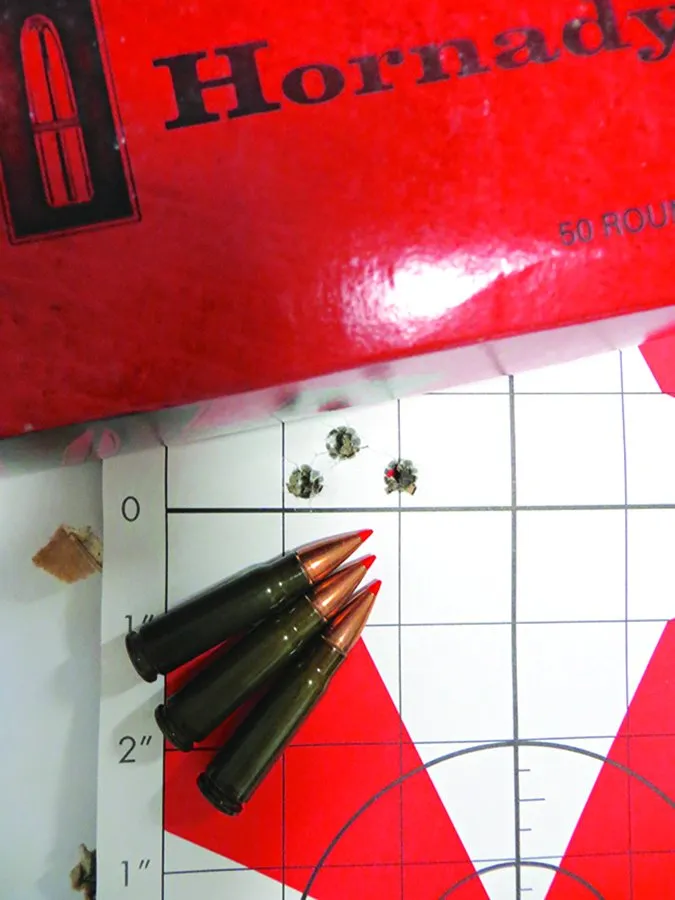
Downside: We found impact shifts at 25 yards with all the rifles and calibers. Upside: Those shifts stayed within a 5-inch circle on average, and even less with some rifles. Swapping barrels in the Ruger from 5.56 to 300 Blackout gave us shift of 1.5 inches down in elevation, which we anticipated, but were pleased to see it was small and repeatable. The DRD also showed a similar shift from 5.56 to 300 AAC BLK, again an expected and repeatable thing. With the Windham, the 25-yard shift between 5.56/300 AAC BLK/7.62x39mm was about 1.75 inches on average in elevation and windage. The biggest shift in POI at 25 yards was with 9mm ammo, which was dead on in elevation, but POI shifted five inches to left. An unexpected benefit would be that as long as the shifts in POI were repeatable, it would be easy to alter the sights on the fly. At 100 yards we found that, once zeroed, the POI remained within about 1 minute of angle on the 5.56/300 AAC BLK/7.62x39mm calibers.
5.56MM & 223 Remington Range Data
| Aguila 5.56mm NATO 62-gr. FMJ-BT | DRD Tactical CDR-15 | Ruger SR-556 Takedown | Windham Weaponry Model RMCS-4 |
| Average velocity | 2995 fps | 2996 fps | 2979 fps |
| Muzzle energy | 1235 ft.-lbs. | 1236 ft.-lbs. | 1222 ft.-lbs. |
| Smallest group | 0.23 in. | 0.22 in. | 0.24 in. |
| Average group | 0.51 in. | 0.51 in. | 0.51 in. |
| IMI 5.56mm NATO 55-gr. FMJ | |||
| Average velocity | 3107 fps | 3108 fps | 3170 fps |
| Muzzle energy | 1179 ft.-lbs. | 1180 ft.-lbs. | 1227 ft.-lbs. |
| Smallest group | 0.78 in. | 1 in. | 0.27 in. |
| Average group | 1.18 in. | 1.01 in. | 0.57 in. |
| Federal American Eagle 223 Rem. 55-gr. FMJ | |||
| Average velocity | 2894 fps | 2895 fps | 2907 fps |
| Muzzle energy | 1023 ft.-lbs. | 1024 ft.-lbs. | 1032 ft.-lbs. |
| Smallest group | 0.50 in. | 0.29 in. | 0.52 in. |
| Average group | 0.73 in. | 0.39 in. | 0.60 in. |
| HPR Black OPs 223 Rem. 62-gr. OTP | |||
| Average velocity | 2682 fps | 2741 fps | 2727 fps |
| Muzzle energy | 990 ft.-lbs. | 1034 ft.-lbs. | 1024 ft.-lbs. |
| Smallest group | 0.98 in. | 0.71 in. | 0.24 in. |
| Average group | 1.03 in. | 0.86 in. | 0.67 in. |
| To collect accuracy data, we fired three-shot groups from a bench using a rest. Distance: 100 yards for 5.56mm NATO, 300 AAC Blackout, and 7.62x39mm. We recorded velocities with all the rifles using a ProChrono digital chronograph with the first screen placed 15 feet from the muzzle. Special thanks to Eastern Outfitters (EasternOutfitter.com) of Hampstead, North Carolina, for their assistance. | |||
How We Tested
Our testing procedure was to shoot, swap barrels, shoot, and swap barrels again. We were able to get good accuracy out of these rifles, perhaps as good as rifles that are not takedown models. The DRD and Windham came in Plano hard cases, the Ruger came in a soft case. For regular transport, we acquired a VooDoo Tactical Discreet Level III Assault Pack ($90; VoodooTactical.net), which is a discreet looking knapsack-size pack (17 by 8 by 3 inches) you would carry gym clothes in. The Ruger carry case is slightly larger (22.5 by 7 by 7.5 inches) and has Modular Lightweight Load-carrying Equipment (MOLLE, pronounced Molly) straps, definitely making it look more tactical and less discreet. Also, a removable patch with the Ruger logo is on the bag. The padding in both knapsacks hides any outlines the rifle might make. The main section of the VooDoo pack holds the complete lower assembly with an optic mounted and the barrel assembly. The second compartment holds the handguard. Two smaller outside pockets could hold a total of six 30-round magazines. The Ruger knapsack has three pockets, one of which holds the lower, while the other two pockets hold the upper/rail in one pocket and the barrel in the other. The pocket that holds the rail/upper does not allow an optic to mounted, which made the pocket less useful, though we could zip up all components in the pack. We would like a slot cut into the pocket to accommodate and optic and use a hook-and-loop strap to secure it. In comparison, to tote a typical 16-inch-barrel AR broken down into a lower and upper receiver, a pack or duffle bag that is at least 24.5 inches in length in needed.
We used two optics, a Burris AR-332 ($349; Cheaper Than Dirt) with a Ballistic CQ reticle—a donut style reticle—that could be illuminated red or green and is designed for 5.56 or 7.62 ammunition with holdover aiming points built in. It was a good match when swapping calibers. The mount is built into the sight and is at the proper height to attach to an AR. Illumination is manually adjusted via a knob, and the sight runs on one common CR2032 battery. Short Picatinny rails are attached to the sight so a small reflex sight can be paired with the AR-332 for close shooting. The second optic used was a TruGlo SCP TAC 1-4x24mm ($116; Optics Planet) with a Mil-Dot reticle. It features a capped windage turret and an elevation turret that is uncapped so the user can dial in elevation. It came with an AR-ready mount, and we felt this was also a good pairing for these rifles because the multiple aiming points on the Mil-Dot reticle could be synced up with the calibers. We’d tape our cheat sheet to the eye piece.
Takedown Component Dimensions
| DRD Tactical CDR-15 | Ruger SR-556 Takedown | Windham Weaponry Model RMCS-4 | |
| Rail or Upper/Rail Length | 13 in. | 18.5 in. | 15 in. |
| Lower Length | 16 in. | 15.75 in. | 15 in. |
| Barrel Length | 19 in. (w/ end cap) | 17.87 in. | 18.75 in. |
| Note: Typical AR-15 with 16-in. barrel has an upper receiver that is 24.5 inches long, depending on muzzle device, and a lower receiver that is 15.75 inches, depending on type of collapsible stock. | |||
Obviously, there’s a lot going on with these rifles, so here’s the lowdown on these takedowns:
DRD Tactical CDR-15 5.56mm NATO, $2091 300 AAC Blackout Caliber Conversion Kit, $299
GUN TESTS GRADE: A

The CDR-15 had the most secure barrel attachment method, was accurate with minimal loss in zero between different-caliber barrel changes, and had no loss in zero with thesame-caliber barrel changes.
| ACTION TYPE | Semi-automatic, gas impingement |
| OVERALL LENGTH (min/max) | 32.5 to 35.7 in. |
| OVERALL HEIGHT (no optic) | 7.75 in. |
| WEIGHT UNLOADED | 6.8 lbs. |
| WEIGHT LOADED (30 rds) | 7.8 lbs. |
| UPPER RECEIVER | Midlength free-float rail, low-profile gas block |
| LOWER RECEIVER | Black 7075 T-6511; billet aluminum; Magpul MOE grip |
| BARREL (5.56mm NATO) | 16 in.; 1:7 RH twist; 4140 steel |
| OPTIONAL BARREL (300 AAC BLK) | 16 in.; 1:7 RH twist; 4140 steel |
| MUZZLE DEVICE | A2 birdcage; 5/8×24 TPI |
| BUTTSTOCK | Magpul MOE, adjustable 6-position |
| LENGTH OF PULL | 10.7 to 14 in. |
| HANDGUARD | 13 in.; DRD QD Rail |
| MAGAZINE | (1) Magpul PMAG 30-rd. |
| REAR SIGHT | None |
| FRONT SIGHT | None |
| SIGHT RADIUS | N/A |
| TRIGGER | 7.5 lbs., mil-spec single stage |
| SAFETY | Left side 2-position lever |
| CARTRIDGE CASE DEFLECTOR | Yes |
| DUST COVER | Yes |
| FORWARD ASSIST | Yes |
| WARRANTY | N/A |
| TELEPHONE | (678) 398-9059 |
| WEBSITE | DRDTactical.com |
| MADE BY | DRD Tactical/Georgia, USA |

The DRD Tactical CDR-15 was designed to be compact and transportable in a small hard case or knapsack. It comes optic-ready in a hardside 18 by 14 by 7-inch Plano case that stores the entire rifle, magazines and ammo. The top lid holds the barrel assembly, handguard, and two 30-round magazines. The bottom half of the case holds two additional 30-round magazines and the complete lower and the upper receiver assembled with an optic and the stock completely collapsed. We found the TruGlo compact scope when mounted to the DRD did not fit in the cut out. The smaller Burris did fit. There is also a slot for a suppressor. All the components fit into high-density polypropylene foam trays and are secured with hook-and-loop straps. We heard no rattles during transport, and all the parts are balanced in the case. On some of the cut-outs, we would have liked finger holes to more easily remove components. The CDR-15 came with a 5.56x45mm NATO barrel assembly; the 300 AAC BLK barrel assembly kit came at an additional cost, bringing the total to $2390 not including optic.
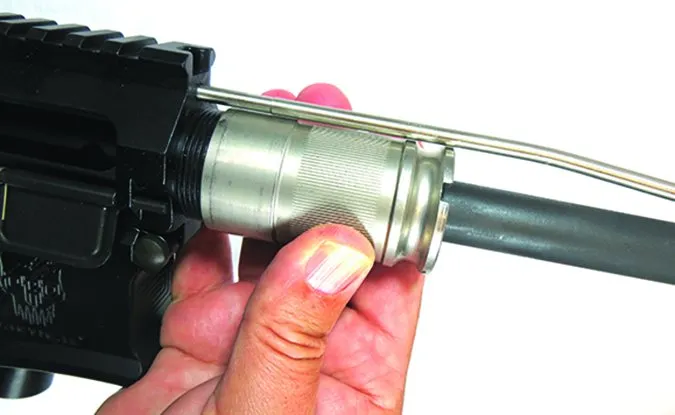
Both the upper and lower receivers are machined from 7075 T-6511 billet aluminum. The lower has an enlarged trigger guard that allows shooting with gloves. The magazine well is flared, and the design allows your trigger finger to lay comfortably along the side of the lower receiver. The trigger, magazine release, and selector lever are all mil-spec, while the stock and grip are Magpul MOE. The hardcoat-anodized Type-III black finish was evenly applied and quite nice. The barrels for either caliber are hammer forged and chrome lined. The 5.56 NATO barrel and the 300 AAC BLK barrel both have a 1:7-inch twist rate. The barrels have a Parkerized finish and use mid-length gas tubes. The handguard is DRD’s proprietary QD 13-inch rail with a Picatinny rail at 12 o’clock. It is also compatible with Magpul L-4 rail panels.
The upper receiver and complete lower receiver are one component in the DRD takedown system — quite different from the Ruger and Windham. The second component is the barrel assembly, which includes the barrel, barrel nut, muzzle device, gas block and gas tube. DRD supplies a metal cap that protects the chamber end of the barrel and end of gas tube, which we thought was a great idea since the end of the gas tube is fairly fragile. The barrel nut screws into the metal cap so no debris can get in nor can the gas tube be bent or dented during transport. The handguard is the third component and uses a retaining pin and a cam lock to secure the handguard to the upper receiver.

To assemble, lock the bolt carrier group rearward then remove the end cap from the barrel assembly and insert the barrel and gas tube into their respective holes in the lower/upper receiver component. Finger tightening suffices for the amount of rounds you will most likely be carrying in case with the rifle. The barrel nut has the same cut-outs as the buffer tubes, so you can also use a wrench if you were going to run a high round count through the rifle. Next, pull the retaining pin and unlock the cam lock on the rail and slide the handguard over the barrel. Align the notches, push the retaining pin back, and lock down the cam. Insert a magazine, and you are ready to fire. We liked the fact we did not have to remove the upper from the lower receiver. With the Ruger and Windham, we needed to assemble the upper to the lower prior to inserting the barrel.

With 5.56 NATO and 300 AAC BLK ammo, including sub-sonic SIG Elite ammo, we loaded six magazines and packed them and the rifle in the VooDoo knapsack and carried it onto the range where we assembled the rifle and got on target at 25 yards then got our dope for 100 yards. The DRD handled well. The action was the smoothest of the three rifles, with the Ruger coming in second, our shooters said. Though the DRD’s trigger was mil-spec, we still eked out some nice groups at 100 yards. Without waiting for the barrel to cool, barrels were swapped. Gloved hands are important when swapping hot barrels. With the 300 AAC BLK barrel, groups were lower in elevation, which we expected, and windage was spot on. This allowed us to use the vertical aiming points on the reticle or adjust elevation to find zero for the 300 AAC BLK barrel.
The DRD ran well, with no issues; even sub-sonic rounds cycled through the DRD rifle. After numerous boxes of ammo fired down range, the rifle came apart easily and just as easily re-assembled. Fouling on the gas tube did not interfere with a barrel swap, and the barrel nut did not seize up.
Our Team Said: The DRD offered good accuracy in both calibers with minimal change in point of impact. Using a reticle with additional aiming points on the vertical axis could make the POI change between cartridges even less of a factor. We liked the storage cap and the ability to use a wrench to tighten the barrel down. It took no time to disassemble and re-assemble the rifle, though we had to be careful with the gas tube. In the hard case, the rifle was easy to tote, and in the knapsack, it was just as easy. If we were to change anything, it would be the 7.5-pound single-stage trigger. For those shooters who want a gas-impingement AR capable of shooting the two most popular AR-15 rounds — 5.56/223 Rem. and 300 AAC BLK — this is a good option.
Ruger SR-556 Takedown 5924 5.56mm NATO, $2199
300 AAC BLK Caliber Conversion Kit, $449
GUN TESTS GRADE: A

The SR-556 Takedown has the simplest takedown method, least felt recoil, and was the most accurate. It also had the highest cost, but was good to go out of the box.
| ACTION TYPE | Semi-automatic, 2-stage piston; 3-position regulation |
| OVERALL LENGTH (min/max) | 32.75 to 36 in. |
| OVERALL HEIGHT (no optic) | 7.75 in. |
| WEIGHT UNLOADED | 7.1 lbs. |
| WEIGHT LOADED (30 rds.) | 8.1 lbs. |
| UPPER RECEIVER | 7075 forged aluminum; manganese phosphate/hardcoat anodized |
| LOWER RECEIVER | 7075 forged aluminum; manganese phosphate/hardcoat anodized; Magpul MOE grip |
| BARREL (5.56mm NATO) | 16.12 in.; 1:8 RH twist; 41V45 chrome-moly-vanadium steel |
| BARREL (300 AAC BLK) | 16.12 in.; 1:7 RH twist; 41V45 chrome-moly-vanadium steel |
| MUZZLE DEVICE | Ruger Flash Suppressor; 1/2×28 TPI |
| BUTTSTOCK | Magpul MOE SL, adjustable 6-position |
| BUTTSTOCK LENGTH OF PULL | 11.1 to 14.9 in. |
| HANDGUARD | Ruger KeyMod Rail |
| MAGAZINE | (3) Magpul PMAG 30 rds. |
| REAR SIGHT | Ruger folding; windage adjustable |
| FRONT SIGHT | Ruger folding; windage and elevation adjustable |
| SIGHT RADIUS | 17 in. |
| TRIGGER | 4.5 lbs., Ruger Elite 452 2-stage |
| SAFETY | Left side 2-position lever |
| CARTRIDGE CASE DEFLECTOR | Yes |
| DUST COVER | Yes |
| FORWARD ASSIST | Yes |
| WARRANTY | N/A |
| TELEPHONE | (336) 949-5200 |
| WEBSITE | Ruger.com |
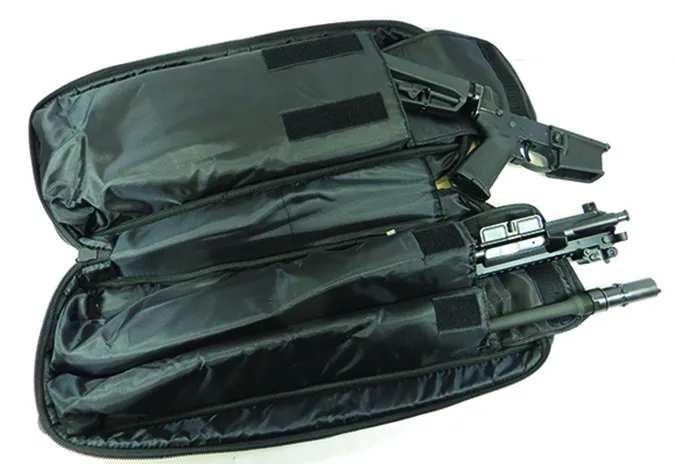
The additional 300 AAC BLK caliber conversion kit brought the total cost to $2648 without an optic. We’ve tested three Ruger SR-556 series rifles prior to the SR-556 Takedown and have graded them A-, so our expectations were high. The SR-556 Takedown uses the same two-stage four-position gas valve system found in the earlier rifles. This system, in our opinion, provided less felt recoil than the others, and it ran smoothly. We liked that we could regulate the gas to the piston, especially when shooting subsonic ammo to ensure proper ejection. There are four settings marked 0, 1, 2, and 3, with “0” closing the valve so the SR-556 acts like a single-shot rifle. The “1” setting allows the least gas to enter the system or is the lowest setting; “3” allows the most gas or is the highest setting. Like the other SR-556 models, the Takedown uses a forged lower and upper receiver. The lower features a Magpul MOE SL stock, which had the least amount of wiggle of all three rifle stocks and offered a nice cheek weld. It also features a Magpul MOE pistol grip, Mil-Spec selector lever, bolt release, and magazine release. The trigger is Ruger’s two-stage Elite 452 AR-Trigger that we found to the best of all three triggers tested. Ours averaged a 4.5-pound trigger pull. We liked the bit of take-up in the first stage and the short, crisp break in the second stage. In our opinion, the trigger helped us achieve some excellent accuracy.

Bolted to the upper receiver is Ruger’s proprietary KeyMod handguard that is thin and comfortable to hold. Rear folding sights are mounted on the top of the upper. The barrel is cold hammer-forged Mil-Spec 41V45 chrome-moly-vanadium steel, chrome-lined, and is capped off with Ruger’s flash suppressor. It also sports Ruger folding sights. Since the Ruger was equipped with sights, it was the only rifle in our test ready for action out of the box. The Windham and DRD need BUIS or optics before being used. The Ruger’s front sight can be adjusted for both elevation and windage, so zero stays with the barrel. The Ruger was the heaviest of the three rifles and that helped contribute to less felt recoil. It and the DRD had the most comfortable stocks. We could carry four loaded magazines in the outside pockets of the Ruger knapsack; the VooDoo pack held six in the outside pockets.

The Ruger breaks down into three key components: lower receiver assembly, upper receiver/handguard assembly, and barrel/piston system assembly. To take the Ruger down, the first step is to pull out the pivot and takedown pins and remove the bolt carrier group. Next, move the slider bar on the underside of the handguard toward the rear of the rifle. Then twist or rotate the barrel assembly clockwise with the muzzle facing away from you and pull the barrel free from the handguard. The rear of the barrel has lugs that mate with grooves in the upper. Very repeatable. The upper and lower are then disassembled like a standard AR-15. One thing to note, if the bolt carrier group is in the forward most position, it will exert a forward force on the barrel, which can make inserting the barrel difficult. Lock the bolt carrier group back when the upper and lower are together or insert the bolt carrier group after the barrel is locked in place.

Once we had performed the procedure a few times, we were proficient and could swap the barrel on the Ruger very fast. Strong fingers were not a requirement with the DRD and Ruger as they were with the Windham. We also liked the fact we did not have to align a gas tube. The Ruger barrel/piston system assembly was sturdy. If we accidentally dropped it, we felt it would not be an issue, but if we dropped the DRD or Windham barrel/gas tube assembly, there was a possibility the gas tube could be damaged. Not a disqualifier by any means, just a function of the different systems the rifles employ and the care needed to assemble each rifle.
Ruger did a good job identifying the optional 300 AAC BLK caliber conversion kit from the 5.56 barrel. The piston housing and magazines are clearly marked “300 BLK,” even though magazines for the 5.56 and 300 AAC BLK are the same. This is important because we did not want to accidentally load wrong ammo into a barrel chamber.
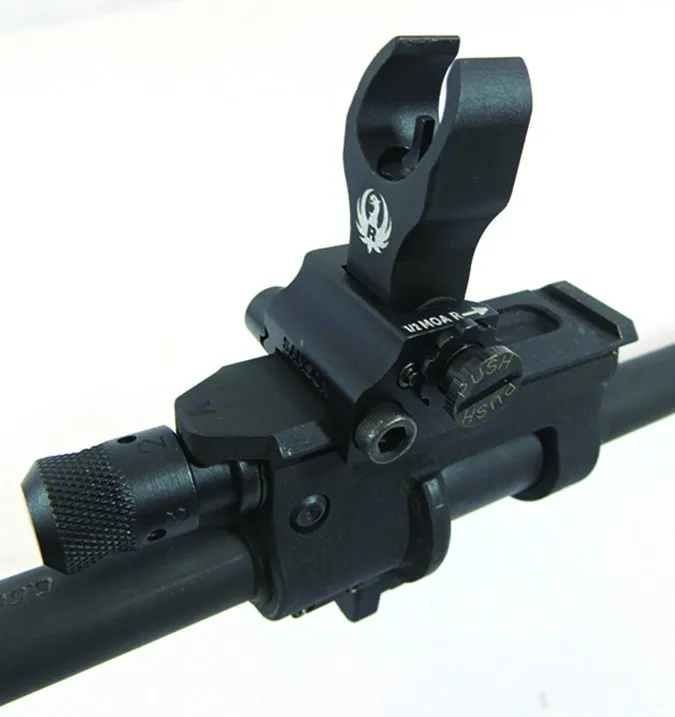

At the bench, the better trigger of the Ruger helped us attain the best accuracy, on average, than the other rifles, though all performed well. We did note that the Ruger barrels provided the most muzzle velocity, the Windham barrels the least. With inexpensive Aguila 62-grain FMJs and Federal American Eagle 55-grain FMJs, one team member was able to shoot three-shot groups of 0.22 and 0.39 inches, respectively, at 100 yards with the Ruger. In 300 AAC BLK with SIG Elite 125-grain Sierra Match King cartridges, we shot a 0.8-inch 3-shot group at 100 yards. We don’t typically do double takes, but with 300 AAC BLK groups, the Ruger almost put two bullets through the same hole. We did not adjust the gas regulator, instead using it on the “1” setting to see if the subsonic would run, and we had no issues. It was 91 degrees at the time of the test, so ammo burn was efficient. Cold weather and variances in ammo may require an adjustment, and we were glad we could make adjustments. We also fired the rifles extensively before swapping barrels to see if residue would make disassembling more difficult, and it did not.
Our Team Said: The SR-556 Takedown was the easiest rifle to disassemble and re-assemble, and it shot small groups due to the weight and trigger. We liked the piston system, and the rubber buttpad produced less felt recoil. We also liked that the rifle could be used out the box with iron sights. We did notice that with an optic, the SR-556 upper receiver component could would not fit into the knapsack pocket. The Ruger was the most expensive package, but if you prefer piston-system ARs, this is a good choice.
Windham Weaponry RMCS-4 5.56mm NATO/9mm Luger/300AAC/7.62x39mm, $2971
GUN TESTS GRADE: A-

The RMCS-4 offered twice the calibers and was accurate with all four, but the takedown method was slightly more complicated.
| ACTION TYPE | Semi-automatic; gas impingement |
| OVERALL LENGTH (min/max) | 32.75 to 36 in. |
| OVERALL HEIGHT (no optic) | 7.75 in. |
| WEIGHT UNLOADED | 7.1 lbs. |
| WEIGHT LOADED (30 rds.) | 8.1 lbs. (5.56mm) |
| UPPER RECEIVER | 7075 forged aluminum; manganese phosphate/hardcoat anodized |
| LOWER RECEIVER | 7075 forged aluminum; manganese phosphate/hardcoat anodized; Magpul MOE grip |
| BARRELS, COMMON SPECIFICATIONS | 16 in. long; 4150 chrome-moly-vanadium steel |
| BARREL (5.56mm NATO) | 1:9 RH twist, M4 profile, 1/2×28 TPI |
| BARREL (300 AAC BLK) | 1:7 RH twist; medium profile, 5/8×224 TPI |
| BARREL (7.62x39mm) | 1:9.5 RH twist; M4 profile, 5/8×24 TPI |
| BARREL (9mm) | 1:10 RH twist; M4 profile, 1/2×36 TPI |
| MUZZLE DEVICES | A2 style flash hider |
| BUTTSTOCK | M4 style, adjustable 6-position |
| BUTTSTOCK LENGTH OF PULL | 11.1 to 14.9 in. |
| HANDGUARD | Windham Weaponry Quad Rail |
| MAGAZINE (5.56mm/300 AAC BLK) | (1) aluminum 30-rd. |
| MAGAZINE (7.62x39mm) | (1) Magpul AK PMAG, 30-rd. |
| MAGAZINE (9mm) | (1) Colt type 20-30-rd. |
| REAR SIGHT | N/A |
| FRONT SIGHT | N/A |
| SIGHT RADIUS | N/A |
| TRIGGER | 7.6 lbs.; mil-spec single stage |
| SAFETY | Left side 2-position lever |
| CARTRIDGE CASE DEFLECTOR | Yes |
| DUST COVER | Yes |
| FORWARD ASSIST | Yes |
| WARRANTY | Lifetime |
| TELEPHONE | (207) 893-2223 |
| WEBSITE | WindhamWeaponry.com |
| MADE BY | Windham Weaponry/ Maine, USA |

What the Windham lacked in speed and ease of barrel swaps, it made up for in extra barrel-conversion calibers, which we thought were quite cleverly designed. The unique feature of the RMCS-4 is its ability to swap magazine wells when swapping barrels to 7.62x39mm and 9mm. The RMCS-4 is similar to Windham’s other ARs built with forged 7075 T6 aircraft aluminum upper and lower receivers. The RMCS-4 uses a standard M4-style stock and A2-style pistol grip. The controls — selector lever, magazine release, bolt carrier release, and trigger — are standard Mil-Spec. The rail/handguard is quad style and a little dated, compared to the KeyMod and MLOK styles now being offered. The rifle comes in a large Plano hard case with an extruded foam insert that holds an assembled rifle, three additional barrels, two additional BCGs, two additional magazine wells, three magazines, sling, and conversion tool. The TruGlo scope, when mounted, did not fit in the case, and with the Burris optic mount, it was a tight fit.

To take down or swap barrels between 5.56 NATO and 300 AAC BLK, lock back the bolt carrier group. A bail on the underside of the handguard is flipped, allowing the retaining block to slide toward the muzzle, revealing two barrel-retaining arms. We needed extra finger strength to flip the bail, and at first used a flat-blade screwdriver to flip the bail and the screwdriver’s plastic handle to snap the bail back. With use, the bail became easier to manipulate, but you still needed strong fingers to operate it. The barrel-retaining arms are easily rotated 90 degrees outward to disengage from the barrel. The barrel/gas tube assembly is then pulled out from the handguard.

At first, we had a few issues with removing and replacing the barrels due to the forward sling loops attached to the gas blocks. The 9mm barrel does not have a sling loop. The loop, if not managed properly, can slip into a notch on the bottom Picatinny rail and not the allow the barrel to be pulled free. When inserting the barrel, the loop can pivot toward the barrel and not allow the barrel to be fully seated. Not a deal-killer, just a trait of the takedown design. We would add a small section Picatinny rail cover at the end of the bottom rail to avoid the sling loop hanging up on the rail. It would also keep the bail and barrel retaining block from accidentally sliding off the Picatinny rail. Or we would relocate the sling loops to a small section of rail mounted to the bottom Picatinny rail. Like with the DRD, the gas tube of the Windham needed to be aligned, but unlike the DRD, the Windham’s handguard is attached to the upper receiver, so you need to look through the handguard to ensure the gas tube aligns with its hole. The handguard has a cut out, so alignment was not that big of an issue. Still, we did need to be more careful and take more time with the Windham barrel assemblies that had a gas tube.
We packed the Windham with one barrel in the VooDoo pack and found it was just as easy to tote as the DRD. In the hard case, the rifle mounted with the TruGlo scope did not fit into the foam cut out. Otherwise, the hard case was balanced well when carried, but like the DRD case, was not as discrete as the VooDoo knapsack.

To change to 7.62x39mm, the upper receiver is separated from the lower receiver. A small retaining pin in the front of the trigger guard is compressed with a supplied tool and the trigger guard pivoted away from the magazine well. Using the magazine-release button, the magazine well is slid up and off the lower and replaced with a magazine well compatible with AK-style magazines. A smart feature, we thought, since we have had hot and cold experiences with ARs adapted to 7.62x39mm that use AR-style magazines adapted to the 7.62x39mm. Once the magazine insert is installed, AK magazines fit into the gun in the same roll-and-lock method as used when changing a magazine on an AK rifle. When replacing the upper on the 7.62x39mm caliber, the barrel is swapped as well as the bolt carrier group. The 7.62x39mm-compatible bolt carrier group is marked “AK” along the side. The bolt head also has three rings milled into it to separate from the other two bolt carrier groups. We wanted the markings a bit bolder. There is no bolt-carrier release in the 7.62x39mm configuration. Like an AK rifle, the bolt does not lock back on last round fired.

To change to 9mm, the user follows the same process with a magazine well designed for skinny Colt-style 9mm magazines. After swapping the magazine well, the barrel and bolt carrier group are swapped. The 9mm caliber conversion uses a blowback system, so there is no gas tube. The 9mm bolt carrier group is more clearly marked “9mm,” and it is noticeably different and heavier than a typical AR bolt carrier group. The magazine well was flared, so inserting the skinny magazine was simplified.
At the range we found that the Windham rifle, even with the heavier trigger and Mil-Spec furniture, competed head-to-head with the DRD and Ruger in accuracy, coming in a close second to the Ruger. Quarter-inch three-shot groups at 100 yards with Aguila and IMI were quite pleasing. On average, in 5.56 the Windham gave us 0.57-inch groups. In 300 AAC BLK, the SIG Elite was most accurate load with a 0.28-inch best three-shot group at 100 yards. It averaged about 1 MOA with the 300 AAC BLK ammunition across the board and had absolutely no issues. Swapping barrels between these calibers was fast once we were familiar with the system, but its assembly was not as fast as the other two rifles.
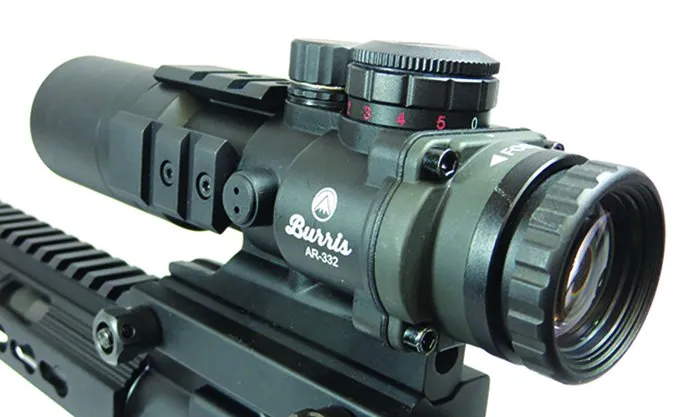
When swapping to 7.62x39mm, we had initial feeding problems with steel lacquered cases, so we lubed the bolt carrier group and changed to Winchester ammo with brass cases. Then we rotated in steel Hornady and Tulammo rounds and the issue worked itself out. At 100 yards, we averaged between 0.5- and 0.75-inch three-shot groups, which impressed us. With the M4-style stock, the recoil in this caliber was much more noticeable. In 9mm the operation of the rifle noticeable changed with the heavier bolt carrier group cycling. Accuracy at 25 yards shifted 5 inches left, which was repeatable. The Colt-style magazine worked fine, but we also wondered that because the magazine wells are removable, if a magazine well compatible with Glock, S&W M&P or Beretta 92 magazines could be designed to make this caliber conversion even more efficient for a user who owns one of these handguns.
Although the caliber conversions make the Windham very adaptable with different calibers, the trade off is a changing point of impact. One cannot expect the 9mm barrel to shoot like the other calibers; that is why we feel an optic with an easily adjustable reticle be mounted so it can be adjusted for each barrel’s zero. We found that across the span of barrels, each barrel shot to the same point of impact when removed and replaced. Repeatability is a wonderful thing.
Our Team Said: We liked the versatility with the caliber conversions allowing the rifle to used for hunting, self defense, and training. We appreciated the repeatability of point of impact, and accuracy was good. Reliability was good, even after the initial hiccup with the 7.62x39mm cartridge. The sling loop was a minor nuisance at the beginning, but we soon learned to handle the rifle more efficiently. Markdowns: We’d replace the stock, pistol grip, and trigger if we owned this AR to make it more comfortable to shoot.
Written and photographed by Robert Sadowski, using evaluations from Gun Tests team testers.






















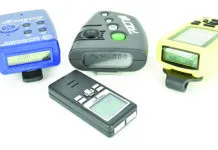








That was a treat to read! None of the puffery and grandstanding gun reviews typically contain.